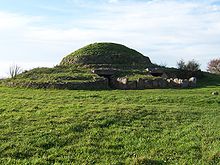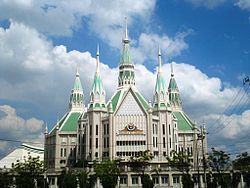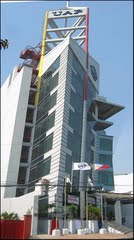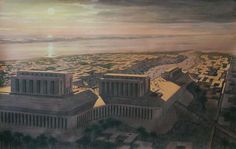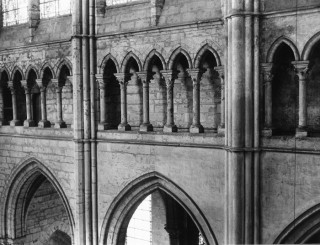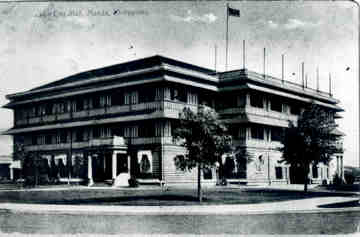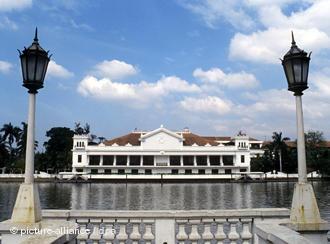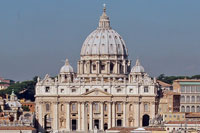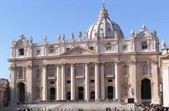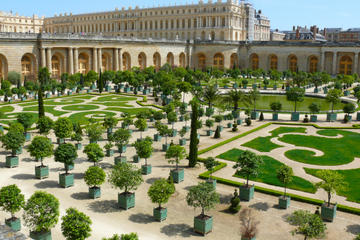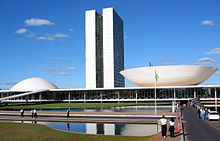Architecture Licensure Board Exam: Quiz!
(145).jpg)
.
- 1.
A mound of earth and stones raised over a grave or graves.
- A.
Tumulus
- B.
Dolmen
- C.
Stupa
- D.
Menhir
Correct Answer
A. TumulusExplanation
A tumulus is a mound of earth and stones that is built over a grave or graves. It is a type of burial monument that can be found in various cultures and time periods. Tumuli were often used to mark the burial site of important individuals or to create a visible landmark in the landscape. They can vary in size and shape, but they typically consist of a raised mound with a burial chamber or cairn underneath. Tumuli have been found in many parts of the world, including Europe, Asia, and the Americas.Rate this question:
-
- 2.
Guess the name of this building- Designed by Angel Nakpil, this is the first High Rise Building in the Philippines.
- A.
Manila Peninsula
- B.
Manila Hotel
- C.
Burke Building
- D.
Picache Building
Correct Answer
C. Burke BuildingExplanation
Completed in 1918, the Burke Building was a pioneering skyscraper in Manila, Philippines. Designed by Angel Nakpil, a prominent Filipino architect, it was the first high-rise building in the country, marking a significant advancement in the nation's architectural landscape. The building's innovative design and construction techniques paved the way for future skyscraper development in the Philippines.Rate this question:
-
- 3.
Architect of the Iglesia ni Cristo Central.
- A.
Carlos Santos Viola
- B.
Thomas Mapua
- C.
Angel Nakpil
- D.
Leandro Locsin
Correct Answer
A. Carlos Santos ViolaExplanation
Carlos Santos Viola is the correct answer because he was the architect of the Iglesia ni Cristo Central. He is known for his architectural designs and contributions to the construction of the central headquarters of the Iglesia ni Cristo.Rate this question:
-
- 4.
Designer of the UAP Headquarters.
- A.
L. Locsin
- B.
T. Vasquez
- C.
R. Sac
- D.
P. Antonio
Correct Answer
B. T. VasquezExplanation
T. Vasquez is the correct answer because he is known as the designer of the UAP Headquarters.Rate this question:
-
- 5.
Dry area or the sweating area of the Roman Thermae.
- A.
Tepidarium
- B.
Balnae
- C.
Laconicum
- D.
Frigidarium
Correct Answer
C. LaconicumExplanation
The correct answer is laconicum. The laconicum refers to the sweating area of the Roman Thermae, where individuals would go to induce perspiration and detoxify their bodies. It was typically a small, heated room with high humidity, resembling a modern-day sauna. The laconicum was an important part of the Roman bathing ritual and was believed to have various health benefits.Rate this question:
-
- 6.
Architect of the Pyramid of Djoser.
- A.
Khafra
- B.
Cheops
- C.
Khufu
- D.
Imhotep
Correct Answer
D. ImhotepExplanation
Imhotep is the correct answer because he is widely recognized as the architect of the Pyramid of Djoser. He was a prominent figure in ancient Egypt, known for his skills in architecture, engineering, and medicine. Imhotep's innovative design for Djoser's pyramid, also known as the Step Pyramid, marked a significant advancement in pyramid construction and influenced future pyramid designs in Egypt. His contributions to architecture and his role in designing one of the earliest and most iconic pyramids make him the most likely candidate for the architect of the Pyramid of Djoser.Rate this question:
-
- 7.
First city in the world.
- A.
Ur
- B.
Eridu
- C.
Mu
- D.
Yamatai
Correct Answer
B. EriduExplanation
Eridu is considered to be the first city in the world because it is one of the earliest known settlements in ancient Mesopotamia. Located in present-day Iraq, Eridu was founded around 5400 BCE and is believed to have been inhabited continuously for thousands of years. Archaeological evidence suggests that Eridu was a thriving urban center with a complex social and religious structure. Its significance as the first city lies in its role as a precursor to the development of civilization in the region and its influence on subsequent urban settlements in Mesopotamia.Rate this question:
-
- 8.
Art Deco originated from this country.
- A.
France
- B.
Germany
- C.
England
- D.
America
Correct Answer
A. FranceExplanation
Art Deco originated in France. This artistic and design movement emerged in the 1920s and 1930s, following World War I. It was characterized by its sleek, geometric forms, bold colors, and luxurious materials. France, particularly Paris, was the epicenter of the Art Deco movement, with many influential artists, designers, and architects contributing to its development. The movement influenced various aspects of design, including architecture, interior design, fashion, and visual arts. Its influence can still be seen today in many iconic buildings and artworks around the world.Rate this question:
-
- 9.
A gallery or arcade above the arches of the nave, choir, and transepts of a church.
- A.
Apse
- B.
Triforium
- C.
Baldochino
- D.
Clerestory
Correct Answer
B. TriforiumExplanation
The correct answer is Triforium. A triforium refers to a gallery or arcade that is located above the arches of the nave, choir, and transepts of a church. It is typically found in Gothic architecture and serves both functional and decorative purposes. The triforium provides a walkway or passage for clerics and can also house small chapels or additional seating. It is often characterized by its arcades or arches and can be seen as an intermediate level between the ground floor and the clerestory.Rate this question:
-
- 10.
Main entry and changing room of the Roman Thermae.
- A.
Laconicum
- B.
Caldarium
- C.
Tepidarium
- D.
Apodyterium
Correct Answer
D. ApodyteriumExplanation
The correct answer is apodyterium. The apodyterium is the changing room in a Roman Thermae, where visitors would undress and store their belongings before entering the baths. It served as a transition space between the main entry and the bathing areas. This room was typically spacious and could accommodate a large number of people. The apodyterium was an important part of the Roman bathing ritual, providing a place for socializing and preparing for the bathing experience.Rate this question:
-
- 11.
Architect of the First Manila City Hall.
- A.
Daniel Burnham
- B.
William Parsons
- C.
Edgar Bourne
- D.
Luis Rocha
Correct Answer
C. Edgar BourneExplanation
Edgar Bourne is the correct answer because he was the architect of the First Manila City Hall. Daniel Burnham is known for his urban planning work in Manila, but he did not specifically design the First Manila City Hall. William Parsons was an American architect who worked on various projects in the Philippines, but there is no evidence to suggest that he designed the First Manila City Hall. Luis Rocha is not known for any significant architectural work in Manila.Rate this question:
-
- 12.
Architect of the Malacanang Palace.
- A.
Luis Rocha
- B.
Daniel Burnham
- C.
Pablo Antonio
- D.
Juan Arrelano
Correct Answer
A. Luis RochaExplanation
Luis Rocha is the correct answer because he was the architect of the Malacanang Palace.Rate this question:
-
- 13.
First to design the St Peter's Basilica in the form of a Greek Cross. His design form is to have a central dome be surrounded by four lower domes at the diagonal axes.
- A.
Giuliano da Sangallo
- B.
Michelangelo Buonarroti
- C.
Donato Bramante
- D.
Raphael
Correct Answer
C. Donato BramanteExplanation
Donato Bramante is the correct answer because he was the architect who designed the St. Peter's Basilica in the form of a Greek Cross. His design included a central dome surrounded by four lower domes at the diagonal axes.Rate this question:
-
- 14.
Who designed the current facade of St. Peter's Basilica?
- A.
Donato Bramante
- B.
Raphael
- C.
Michelangelo Buonarrotti
- D.
Carlo Maderno
Correct Answer
D. Carlo MadernoExplanation
Carlo Maderno designed the current facade of St. Peter's Basilica.Rate this question:
-
- 15.
First City to use Landscape Architecture as a design concept.
- A.
Versailles
- B.
Villandry
- C.
Warsaw
- D.
Dorset
Correct Answer
A. VersaillesExplanation
Versailles is the correct answer because it was the first city to use landscape architecture as a design concept. The Palace of Versailles, located in France, is renowned for its extensive gardens and landscaping, which were meticulously designed by landscape architect André Le Nôtre in the 17th century. The gardens at Versailles are a prime example of the use of landscape architecture to create a harmonious and aesthetically pleasing environment, making it the first city to incorporate this design concept.Rate this question:
-
- 16.
When is the Summer Solstice?
- A.
March 21
- B.
June 21
- C.
October 21
- D.
December 21
Correct Answer
B. June 21Explanation
The Summer Solstice occurs on June 21. This is the day when the Northern Hemisphere experiences the longest period of daylight and the shortest night of the year. It marks the official beginning of summer and is the point in the Earth's orbit where the North Pole is tilted closest to the sun. This tilt causes the sun to reach its highest position in the sky, resulting in the longest day of the year.Rate this question:
-
- 17.
What is the tilt of the earth?
- A.
10 degrees 22 minutes
- B.
12 degrees 23 minutes
- C.
21 degrees 45 minutes
- D.
23 degrees 47 minutes
Correct Answer
D. 23 degrees 47 minutesExplanation
The tilt of the Earth refers to its axial tilt, which is the angle between the Earth's rotational axis and its orbital axis around the Sun. This tilt is responsible for the changing seasons and the variation in daylight hours throughout the year. The correct answer of 23 degrees 47 minutes indicates that the Earth is tilted at this angle, causing the observed seasonal changes on our planet.Rate this question:
-
- 18.
Architect of the National Congress of the Federative Republic of Brazil in Brasilia.
- A.
Oscar Niemeyer
- B.
Lucio Costa
- C.
Roberto Marx
- D.
Le Corbusier
Correct Answer
A. Oscar NiemeyerExplanation
Oscar Niemeyer is the correct answer because he was the architect of the National Congress of the Federative Republic of Brazil in Brasilia. He is known for his modernist architectural style and his contributions to the design of Brasilia, the capital city of Brazil. Niemeyer's work in Brasilia, including the National Congress building, is considered iconic and has made a significant impact on the architectural world.Rate this question:
-
- 19.
What is the real name of Le Corbusier?
- A.
Marguerite Tjader Harris
- B.
Pierre Jeanneret
- C.
Charles-Édouard Jeanneret
- D.
Charlotte Perriand
Correct Answer
C. Charles-Édouard JeanneretExplanation
The real name of Le Corbusier is Charles-Édouard Jeanneret. This is the correct answer because Le Corbusier was a Swiss-French architect and designer who was born with the name Charles-Édouard Jeanneret-Gris. He later adopted the pseudonym Le Corbusier, which became his professional name. Marguerite Tjader Harris, Pierre Jeanneret, and Charlotte Perriand are not the real names of Le Corbusier and are incorrect options for this question.Rate this question:
-
- 20.
Architect notable for the Lyric Theatre, Life Theatre, Galaxy Theatre, FEU buildings. He is also the second architect to be awarded the title of National Artist after Juan Nakpil.
- A.
Pablo Antonio
- B.
Angel Nakpil
- C.
Tomas Mapua
- D.
Luis Rocha
Correct Answer
A. Pablo AntonioExplanation
Pablo Antonio is the correct answer because he is a notable architect known for designing various buildings such as the Lyric Theatre, Life Theatre, Galaxy Theatre, and FEU buildings. He is also recognized as the second architect to be awarded the title of National Artist, following Juan Nakpil.Rate this question:
-
- 21.
If the Filipino building beliefs is to be considered, what month is it considered to be very unlucky to start building construction?
- A.
January
- B.
February
- C.
November
- D.
December
Correct Answer
B. FebruaryExplanation
In Filipino culture, it is believed that starting construction in February is very unlucky. This belief is rooted in the superstition that February is the month of ghosts and spirits. It is believed that starting construction during this month may anger the spirits and bring bad luck to the project. Therefore, it is advisable to avoid starting construction in February according to Filipino building beliefs.Rate this question:
-
- 22.
Warm colors are considered to be?
- A.
Analogous
- B.
Triadic Discontinuous
- C.
Complementary
- D.
Quadratic Analogous
Correct Answer
A. AnalogousExplanation
Analogous colors are colors that are adjacent to each other on the color wheel. They are often found in nature and create a harmonious and pleasing effect when used together. Warm colors, such as red, orange, and yellow, are considered to be analogous because they are all located next to each other on the color wheel. This means that they share similar undertones and can be easily blended together in a design or artwork.Rate this question:
-
- 23.
A symmetrical three-dimensional shape, either solid or hollow, contained by six equal squares.
- A.
Rectangular Prism
- B.
Hexahedron
- C.
Cube
- D.
Hexeract
Correct Answer
C. CubeExplanation
A cube is a symmetrical three-dimensional shape that is contained by six equal squares. It can be solid or hollow. The term "hexahedron" is a general term for any three-dimensional shape with six faces, but a cube specifically refers to a hexahedron with six equal square faces. A rectangular prism is a different shape that has rectangular faces instead of square faces. A hexeract is a four-dimensional shape, so it does not fit the description of a three-dimensional shape contained by six squares.Rate this question:
-
- 24.
Based on the RA ____ and PD ___, Architectural drawings such as schemes and contract documents are the property of the Architect.
- A.
9266; 49
- B.
9514; 54
- C.
344; 957
- D.
9266; 220
Correct Answer
A. 9266; 49Explanation
Based on the RA 9266 and PD 49, Architectural drawings such as schemes and contract documents are considered the property of the Architect.Rate this question:
-
- 25.
Based on the UAP SPP documents, _______ should be given 15 days after receiving the NTP.
- A.
Contract Sum Breakdown
- B.
Bill of Quantity
- C.
Timeline of Construction
- D.
Release of Retention
Correct Answer
A. Contract Sum BreakdownExplanation
According to the UAP SPP documents, the contract sum breakdown should be given 15 days after receiving the NTP. This means that after receiving the Notice to Proceed (NTP), the contractor is required to provide a detailed breakdown of the contract sum within 15 days. This breakdown includes a comprehensive analysis of the costs involved in the project, such as labor, materials, equipment, and other expenses. It is an essential document that helps both the client and the contractor to have a clear understanding of the financial aspects of the project.Rate this question:
-
Quiz Review Timeline +
Our quizzes are rigorously reviewed, monitored and continuously updated by our expert board to maintain accuracy, relevance, and timeliness.
-
Current Version
-
Oct 18, 2024Quiz Edited by
ProProfs Editorial Team -
Apr 12, 2016Quiz Created by
Kheiro.santos
 Back to top
Back to top



